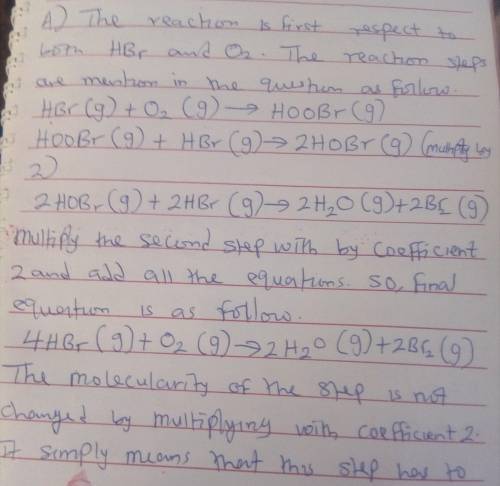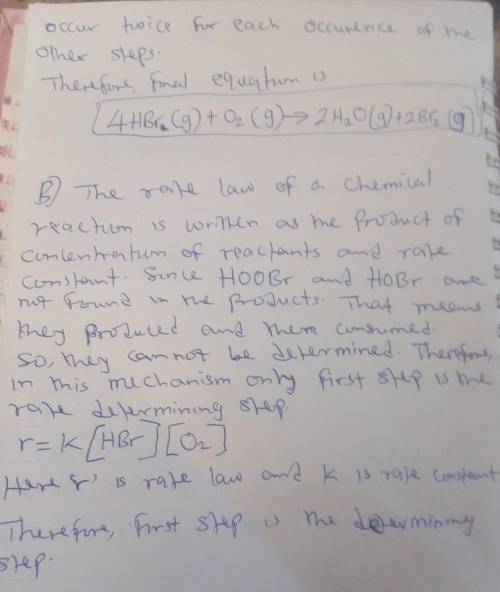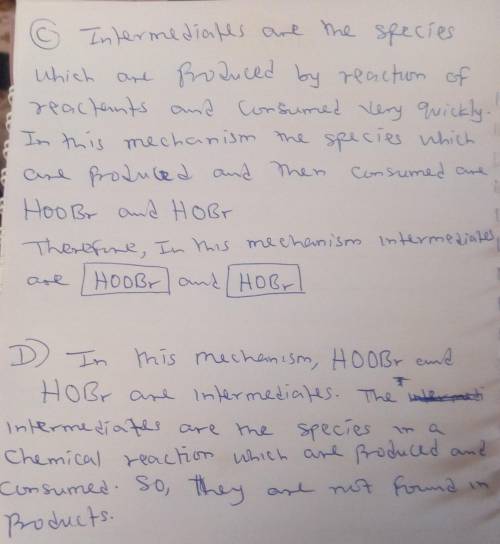
Chemistry, 22.04.2020 04:07 springlover7266
You have studied the gas-phase oxidation of HBr by O2: 4 HBr(g) + O2(g) → 2 H2O(g) + 2 Br2(g) You find the reaction to be first order with respect to HBr and first order with respect to O2. You propose the following mechanism: HBr(g) + O2(g) → HOOBr(g) HOOBr(g) + HBr(g) → 2 HOBr(g) HOBr(g) + HBr(g) → H2O(g) + Br2(g) a. Confirm that the elementary reactions add to give the overall reaction. (Hint: Use Hess Law) b. Based on the experimentally determined rate law, which step is rate determining? c. What are the intermediates in this mechanism? d. If you are unable to detect HOBr or HOOBr among the products, does this disprove your mechanism?

Answers: 1
Another question on Chemistry

Chemistry, 22.06.2019 07:30
All cells are made of four types of acids, lipids, proteins, and carbohydrates.
Answers: 1

Chemistry, 23.06.2019 03:00
Give a real-world example of an energy transformation that uses two of the following forms of energy: chemical, mechanical, nuclear, gravitational, radiant, electrical, thermal (heat), and/or sound.
Answers: 3

Chemistry, 23.06.2019 07:00
Ajar contains a certain substance. which observation would show that the substance must be either a solid or a liquid?
Answers: 1

Chemistry, 23.06.2019 09:50
T(s) in2os] (m) 0 185 2.39 546 1.90 725 1.70 the decomposition of n205 can be described by the equation 2.68 given these data for the reaction at 45°c in carbon tetrachloride solution, calculate the average rate of reaction for each successive time interval. ntr s to 185 s 185 s to 546 s 546 s to 725 s number number number reaction rate: m/s m/s m/s
Answers: 1
You know the right answer?
You have studied the gas-phase oxidation of HBr by O2: 4 HBr(g) + O2(g) → 2 H2O(g) + 2 Br2(g) You fi...
Questions


Mathematics, 30.04.2021 16:50







Mathematics, 30.04.2021 16:50

Chemistry, 30.04.2021 16:50

Mathematics, 30.04.2021 16:50




World Languages, 30.04.2021 16:50


Mathematics, 30.04.2021 16:50

Mathematics, 30.04.2021 16:50








